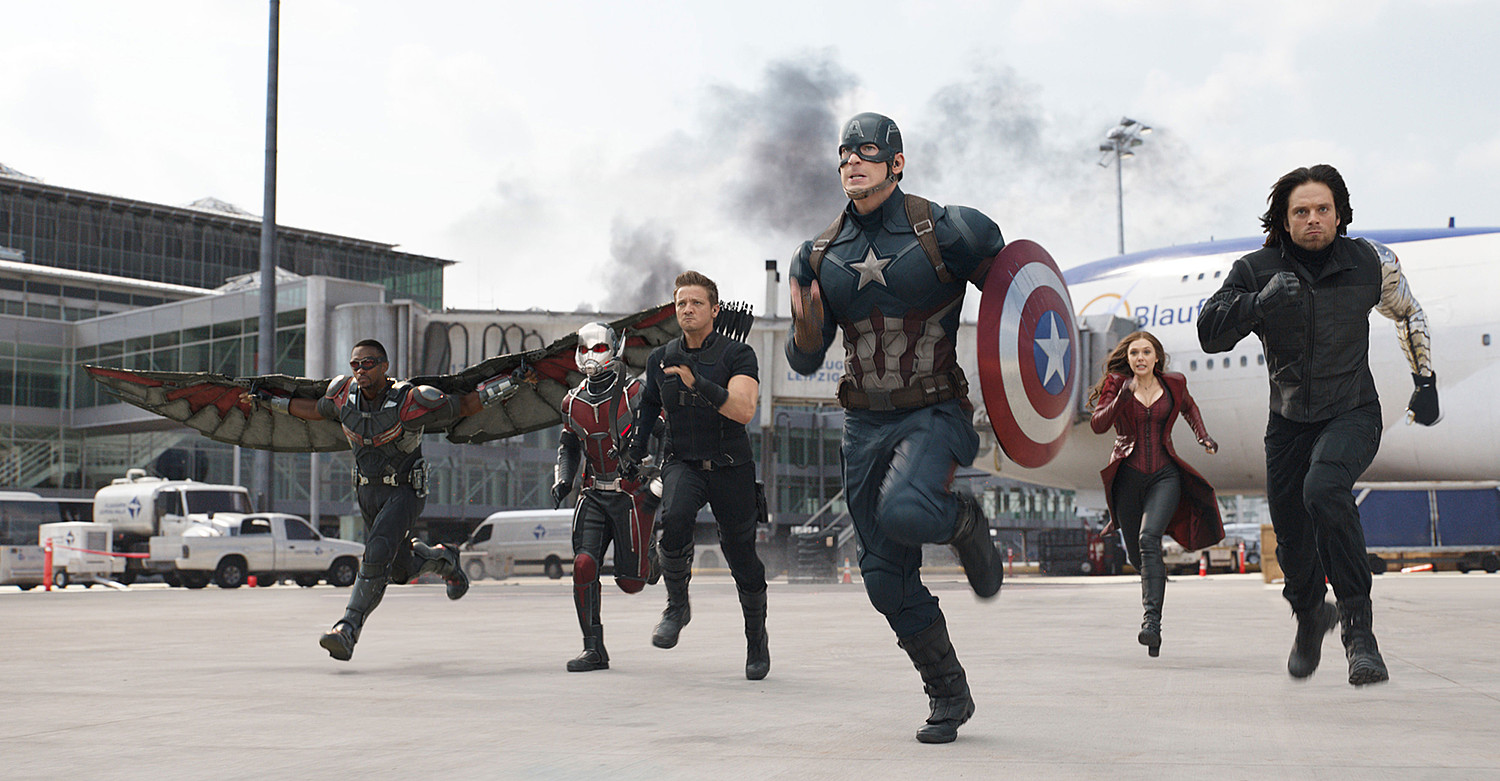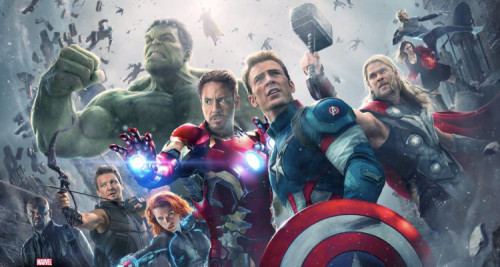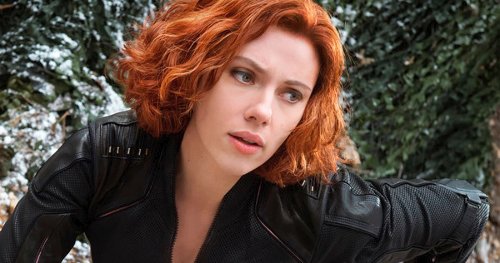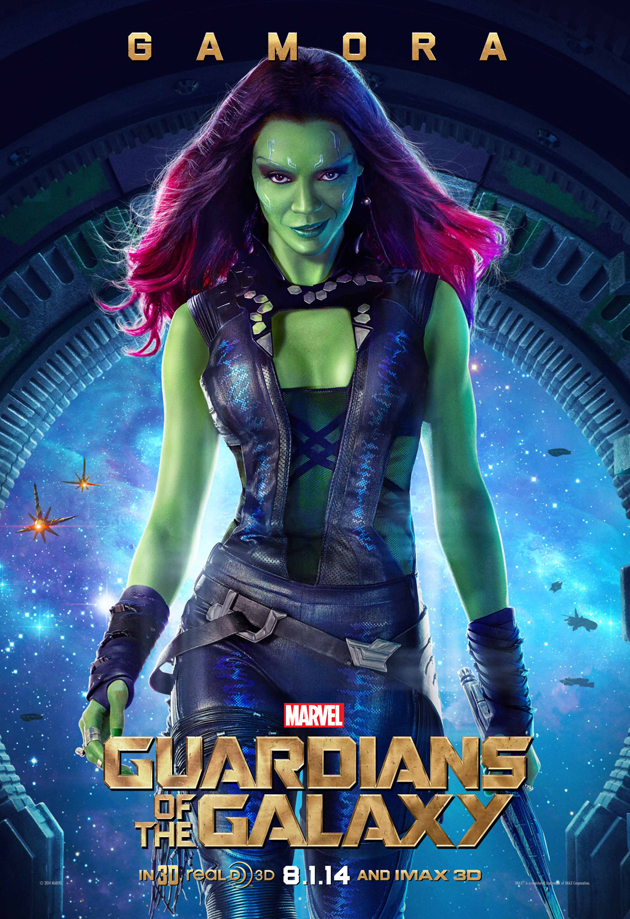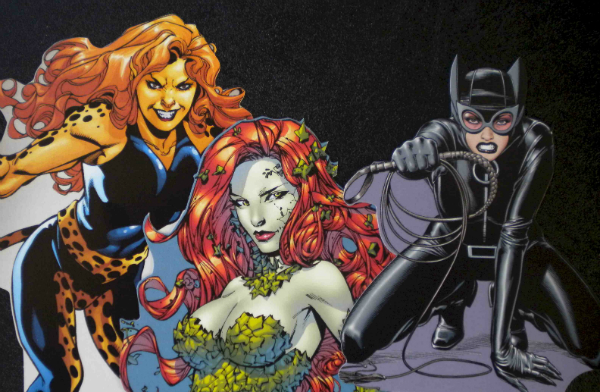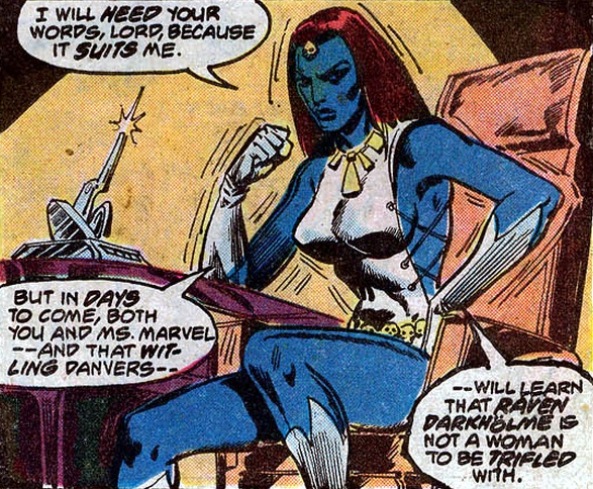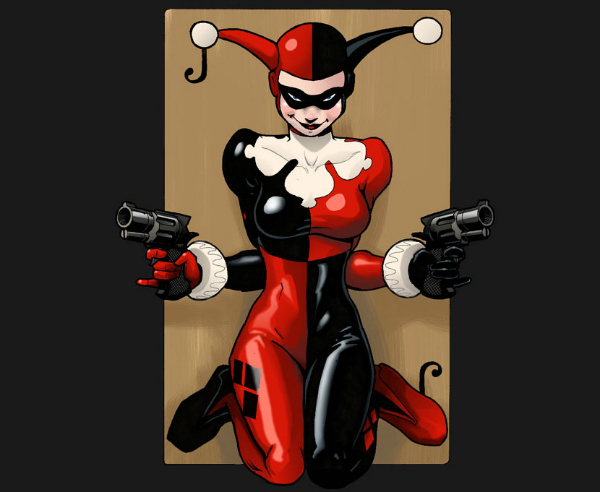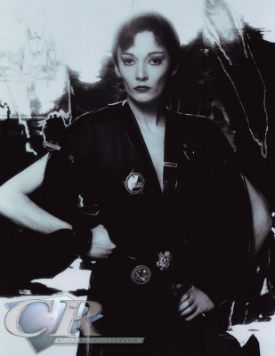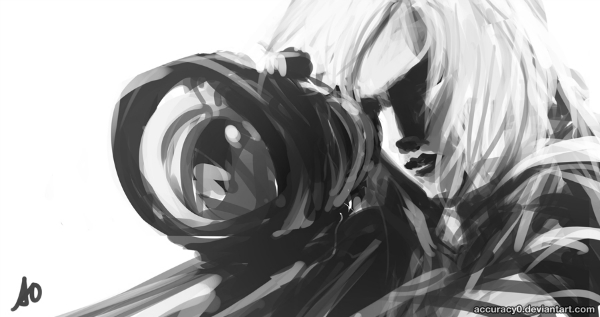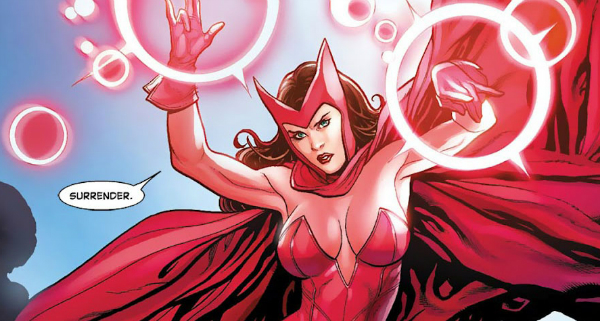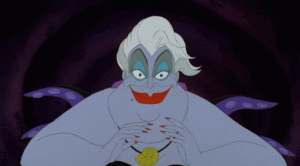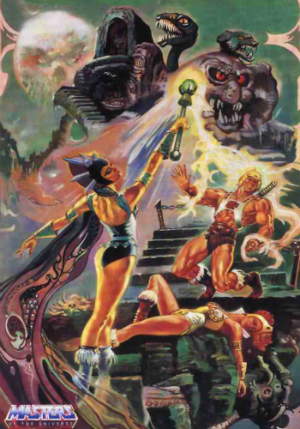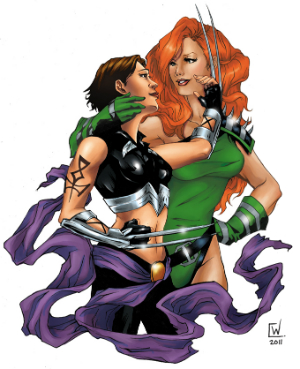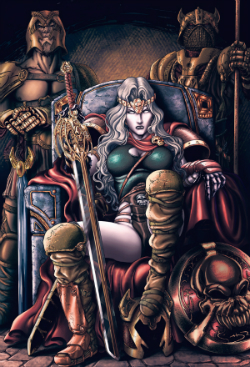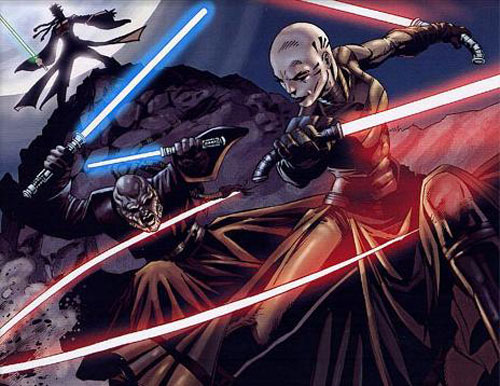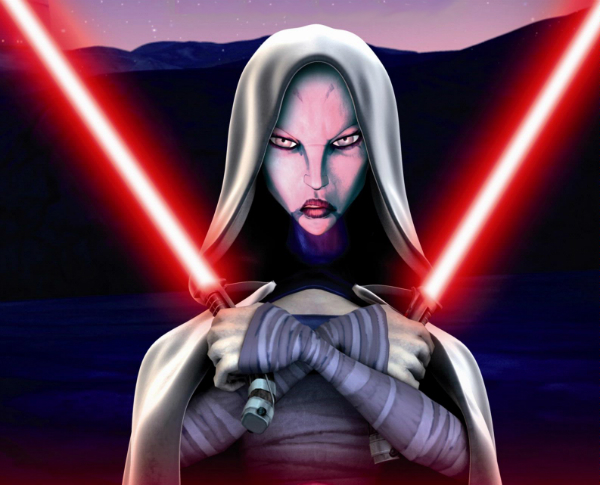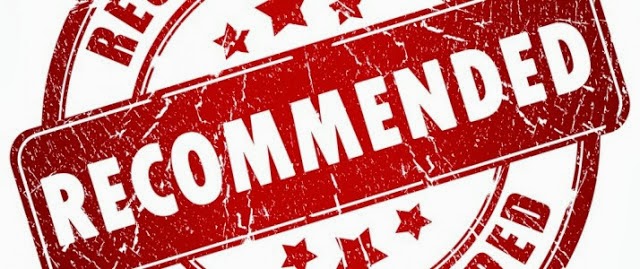This guest post written by Deborah Krieger appears as part of our theme week on Unpopular Opinions. | Spoilers ahead.
Recently I was discussing Captain America: Civil War with a friend, when he brought up the treatment of the character of T’Challa in the narrative of the film. Namely, he pointed out that the three Black male characters in the film — James Rhodes (Don Cheadle), Sam Wilson (Anthony Mackie), and T’Challa (Chadwick Boseman) — all serve comic relief purposes, fulfilling the stereotype of the wisecracking Black best friend. While I acknowledged that Rhodey and Sam — especially Sam — bore traces of this characterization, I was surprised that he viewed T’Challa in the same vein. After seeing the film, one of the aspects that stood out for me was Chadwick Boseman’s performance as the Black Panther, and how it brought an unexpected gravity to the proceedings of the film, and in a sense, he had the most complete character arc and greatest sense of closure in the film. Yet the more I thought about what my friend had pointed out, the more I realized that he was ultimately right: while some characters treated T’Challa with the respect his role as the King of Wakanda required (namely, Natasha), for the most part, he was a bit of a sore thumb in the way he interacted with the other characters, and tonally did not fit within the overall atmosphere of Captain America: Civil War.
Continuing this line of thought, I realized that while I had ultimately enjoyed Captain America: Civil War, it exemplified the worst tendency of the Marvel Cinematic Universe — namely, the avoidance of dramatic risk and legitimate emotional stakes in order to create and maintain a sense of delight and entertaining status quo. Upon seeing the highly-overrated Doctor Strange earlier this fall, this assessment was ultimately cemented, but I want to focus specifically on the faults of Captain America: Civil War in terms of how the Marvel Cinematic Universe plays it safe to a fault, and how the film suffers as a result.
Insufficient Stakes
When I was developing my argument for this piece, I kept coming back to the incredible commentary by my favorite film writer, Film Crit Hulk (I’m totally serious) about Star Wars: The Force Awakens. In particular, Film Crit Hulk says of The Force Awakens (de-capitalized for easier reading):
“When discussing the film J.J. openly admitted that there was a popular mantra they used while crafting The Force Awakens, where they would stop frequently and ask themselves:
‘Is this delightful?’
“Which Hulk can certainly understand, for there’s nothing inherently wrong with wanting to be delightful, nor with an audience wanting to consume something delightful… But boy howdy did the filmmakers go full-tilt in that aim and that aim alone. To the point that it seems they looked at every moment and worked backwards from the intended result.
“… And they never, ever cared if it was earned.”
When thinking about Captain America: Civil War, Film Crit Hulk’s point kept coming back to me as something that made a lot of sense about certain sequences in the movie; in particular, the much-vaunted (and extremely well-paced and choreographed) tarmac fight, when Team Cap and Team Iron Man are assembled and deliver the big fight every trailer and poster for this film promised. And it certainly is “delightful” to watch how smaller clusters within each team branch off to fight one another at varying points, how the action cuts deftly and swiftly from moment to moment: Bucky (Sebastian Stan) and Sam tackling the excitable, downright naive Peter Parker (Tom Holland) inside the terminal; Clint (Jeremy Renner) fighting both T’Challa and Natasha (Scarlett Johansson) at various points with both quips and arrows; Scott (Paul Rudd) flitting around inside Tony’s (Robert Downey Jr.) suit in his ant-size form, et cetera. Yet what should be an actual dramatic and tense sequence is undermined by the need for nearly every character to make jokes and self-referential comments, and as a result, we really don’t care what happens in this fight until Rhodes ends up its only true victim (more on that aspect later). Clint and Natasha’s exchange during the fight perfectly exemplifies the total lack of stakes:
NATASHA: “We’re still friends, rights?”
CLINT: “Depends how hard you hit me.”
Where is the danger for these two clearly-established fast friends who find themselves on opposite sides of an incredibly important and divisive conflict? Why isn’t there any risk or sense of worry that this issue might tear them apart? Even the immediate lead-up to this ultimate showdown is lacking in actual drama, opting instead to pander to the audience expectations that this scene is going to be cool and fun, which it really, really shouldn’t be. The half-hearted delivery of Steve’s (Chris Evans) attempt to convince Tony that Bucky was framed actually demonstrates a poor acting choice by Evans, and fails to match Robert Downey Jr.’s evident pain and desperation in trying to convince Steve to back down one last time.
Over the course of the fight, I kept finding myself “delighted,” to use J.J. Abrams’ word, but I wasn’t actually concerned that any of the characters were going to become a casualty of this conflict. Indeed, this entire sequence logically doesn’t even need to exist: Wanda (Elizabeth Olsen), who has telekinetic powers, could have used her gift to freeze Team Iron Man in place, allowing Steve and Bucky to get to the jet while the rest of Team Cap handled Vision (Paul Bettany), whose powers (and personality) still don’t really have much definition. In order to satisfy the studio and fan demands for this ultimate Avenger versus Avenger fight, it seems, internal continuity and danger had to exit the equation.
Character (or Lack Thereof) Issues
In Marvel’s infinite quest to match and best DC films, what once was going to be a proper sequel to Captain America: The Winter Soldier (still the best MCU film) was turned into a superhero-vs-superhero film, likely to compete with the then-upcoming Batman v Superman: Dawn of Justice. The film added more and more characters and gave them each important little moments of characterization and interaction, but managed to, as many have pointed out, turn Civil War into an Avengers story rather than a Captain America one. So while Civil War has been rightfully praised for introducing T’Challa and the third iteration of Peter Parker, it ultimately gave Steve’s and Bucky’s story short shrift, as well as Peggy Carter’s (Haley Atwell) passing and really anything to do with Sam Wilson — and let’s not forget Sharon Carter (Emily VanCamp), sadly reduced to a love interest, replete with a kiss absolutely no one in the theater was rooting for when I saw it. According to Emily VanCamp, the characters would spend Civil War “getting to know each other” — but what we got was a kiss that was totally unearned and completely lacking in chemistry, simply because we didn’t get much of Sharon and Steve getting to know one another. Additionally, the comics have turned Steve into a deep-cover Hydra agent and Steve has had more chemistry over the films with Bucky, Sam, or Tony, and it ultimately leaves a bad taste in my mouth: Marvel is more okay with having a Nazi Cap than a potentially bisexual Cap (who makes out with his old love interest’s niece for good measure).
Furthermore, Civil War does its titular hero a disservice by focusing so much on Tony Stark and his emotional journey at the cost of Steve’s own development. Take the crucial scene in which Tony learns that Bucky killed his parents. Somehow in Steve’s journey chasing down Bucky, he learned, off-screen, that Bucky killed his old friend Howard and Tony’s mother Maria. But we are robbed of Steve’s reaction to this news, as the film completely shifts its focus to how this secret affects Tony. When, exactly, did Steve learn this terrible truth, and when did he decide to keep it from Tony? It is, frankly, a lazy writing solution to what could have been a much more affecting climax of the film: say, for instance, that Tony and Steve both see the video of Bucky killing the Starks at the same time. Then not only would we get a glimpse at how Steve, the title character of this movie, must choose between defending Bucky or standing with Tony; additionally, if Steve and Tony find out at the same time, but Steve still chooses Bucky, that would have actually been more much more dramatic and affecting, because it would have allowed Steve to have to make this choice — this choice that defines the whole conflict of the film. Tony would still have been completely heartbroken and upset beyond all reason, but at Steve’s failure to choose his side rather than some off-screen moment where Steve decided not to tell Tony this truth we never saw Steve actually learn properly. But it seems that after the tarmac fight, Captain America: Civil War becomes, essentially, Iron Man 4, and forgets who its actual protagonist is.
The friend with whom I discussed T’Challa, and who ultimately prompted this essay, made this salient point about the way Captain America: Civil War: “His behavior played out tropes of this exotic figure doing strange/elusive things in a way that makes audiences entertained.” He also had this further general critique of the Black characters in Civil War as a whole: “The three Black characters are heavily reduced to comic functions.” These critiques are important: T’Challa’s seriousness and lack of witty quips at times makes him out to be from a different film entirely, occasionally framing him and his determined attitude as humorous, and the shroud of mystery around the whole character could be seen as an exoticizing touch. But the larger problem with the Black characters in this movie can be seen in the storylines (or lack thereof) of Sam Wilson and James Rhodes.
At least T’Challa has his own narrative and character arc; Sam, introduced in The Winter Soldier as a thoughtful ex-soldier who shares the pain of loss and the uselessness of civilian life with Steve, is in this movie to support Steve and make funny jokes the entire time, playing into the trope of the wisecracking Black sidekick friend (see: Frozone in The Incredibles). In a world in which the third Captain America movie didn’t have the Civil War plotline, we might have actually learned a little more about Sam Wilson, and his admittedly-entertaining antagonistic buddy relationship with Bucky would have had more prominence. But Sam is one of the characters from the Cap side of things, as are Bucky and Steve himself, who loses out by following this plotline.
Rhodey also performs the wisecracking friend role for Tony Stark, but also is the sole casualty of the tarmac battle — he is partially paralyzed — which is used not to develop Rhodey’s character or even give him something to do, but to create pain for Tony and incentive for him to stop Steve. Indeed, Sam’s involvement in Rhodey’s injury might have given both of these characters something more to chew on, as Sam lost his best friend to a similar kind of accident, but instead of focusing on this kind of aftermath, Rhodey’s suffering functions as motivation for Tony, who already has three-plus movies full of development and action. Where was the thematic parallel between Rhodey and Bucky, who both have military experience, similar ride-or-die relationships with their marquee-name best friends, and are both named “James”? (Where was the “Martha” moment in the final battle?!)
Lastly, the lack of an existing friendship between Steve and Tony for Civil War to destroy, makes the fact that these two square off not exactly emotionally fraught. After all, Tony and Steve, in the context of the MCU, have never actually been good friends, spending most of their interactions in the Avengers movies bickering and clashing with one another. While many fans read into these moments in shippy ways, textually, there’s no weight to Tony’s “so was I” comment: they never actually seemed to like each other, which is largely due to mischaracterization in both Avengers films, courtesy of Joss Whedon. But somehow X-Men: First Class managed to create an incredibly significant and loving friendship between Erik and Charles in just one film, only to exhaust audiences’ tear ducts at the end of the movie. But the lack of care taken with developing the rapport between Tony and Steve means that their falling-out just repeats earlier conflicts between these two, rather than actually creating something meaningful and sad.
Also, there are three women in this film with any significant screen time and they are all white. Although Florence Kasumba, as a member of the Dora Milaje, is a scene-stealer delivering the line, “Move or you will be moved.” Does Captain America: Civil War even pass the Bechdel test? Does Wanda’s and Natasha’s brief exchange about undercover work on the Lagos mission even count? Why doesn’t Natasha get more to do as Steve’s other new close friend??
Tone Problems, and What They Mean for the Future of the MCU
After a string of uniformly successful films, Marvel now has a massive problem as it plans to (hopefully) retire Steve and Tony and introduce new heroes like Black Panther, Captain Marvel, and Doctor Strange. Namely, there’s so little tone variation among characters and films that when serious characters like Black Panther are introduced, they stick out like sore thumbs. With the exception of Black Panther and Tony, Steve, and maybe Natasha, pretty much every character in Civil War is the comic relief, particularly Peter and Scott, but also Clint and Vision. Nearly every single character in these movies has the same habit of throwing out one-liners in the middle of fight scenes, mingled with references to popular culture that will probably get dated in ten years. (Doctor Strange, which relies on Strange (Benedict Cumberbatch) referencing Adele and Beyoncé, is a particularly bad offender). There isn’t any sense of trying to create a story that will stand on its own merits. Instead, people come out remembering the jokes and how cool the battles were; a trend that is generally true for all MCU films (especially Avengers, Ant-Man, and Thor). In contrast, Fox Studios’ X-Men movies, X-Men and X2: X-Men United, focus on characterization and the place of mutants within society and still hold up over a decade later. The scene in X2 where Bobby’s mutant “coming-out” scene poignantly resembles a painful coming out of the closet for LGBTQ people, and so it actually matters. Who is going to remember Ant-Man in ten years, despite Paul Rudd being a national treasure worthy of protection by Nic Cage?
In short, while Captain America: Civil War, is a competent, largely well-acted film, it’s far enough in the studio mold of the MCU that it is a major example of where the cracks are beginning to show. It presents the MCU with a major decision to make: will the next phase take T’Challa as its cue and focus on narratives with a more dramatic, serious tone, or will they all be light, pseudo-intellectual Doctor Strange clones (who is in turn a knockoff of Tony Stark in these movies)? “With great power comes great responsibility,” and with the cultural cachet and economic influence of the MCU, they arguably have the responsibility to do better.
See also at Bitch Flicks:
Scarlet Witch and Kitty Pryde: Erased Jewish Superheroines
Why Scarlet Witch May Be the Future of Women in the Marvel Cinematic Universe
Deborah Krieger is a senior at Swarthmore College, studying art history, film and media studies, and German. She has written for Hyperallergic, Hooligan Magazine, the Northwestern Art Review, The Stake, and Title Magazine. She also runs her own art blog, I On the Arts, and curates her life in pictures @Debonthearts on Instagram.
